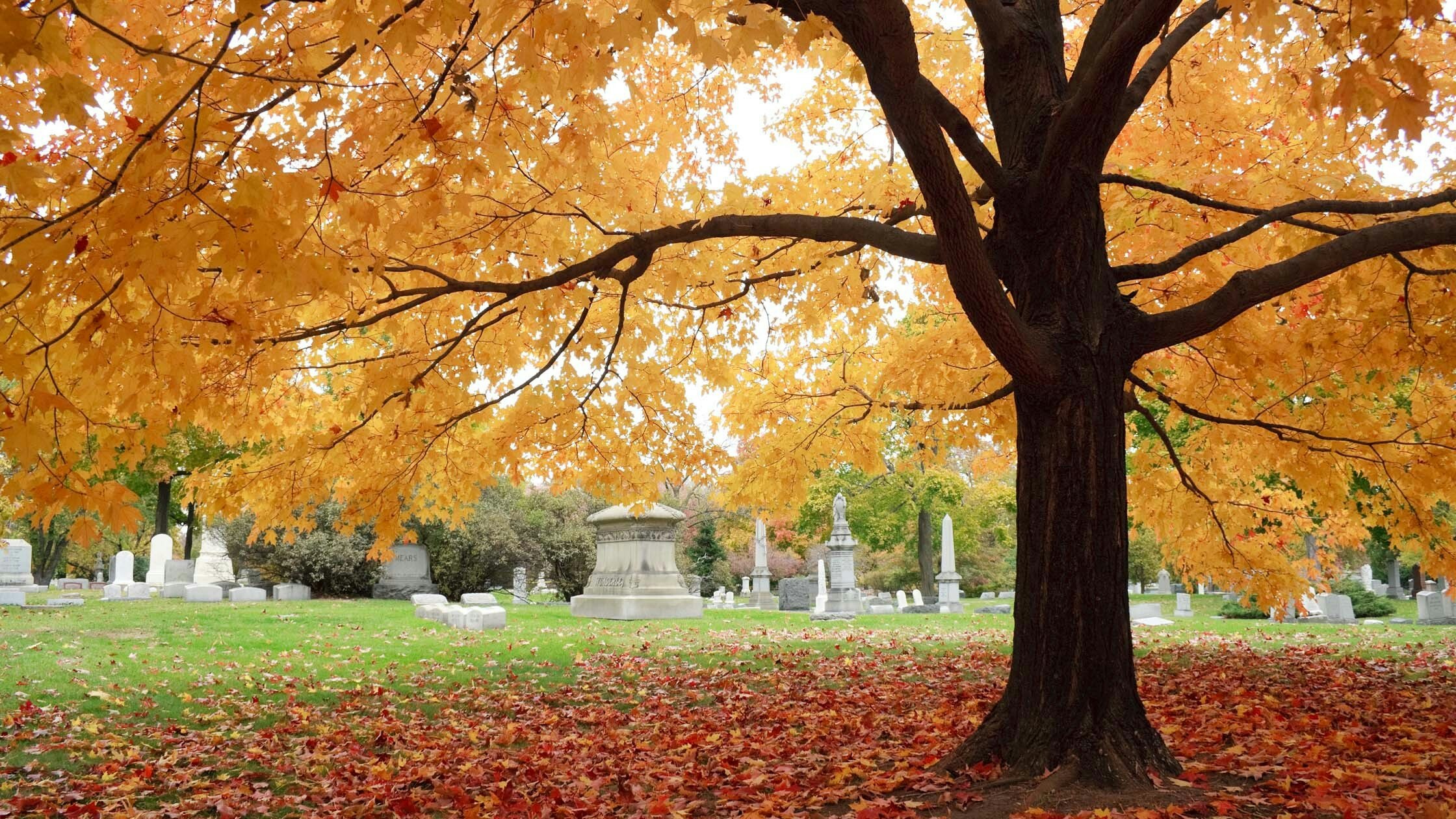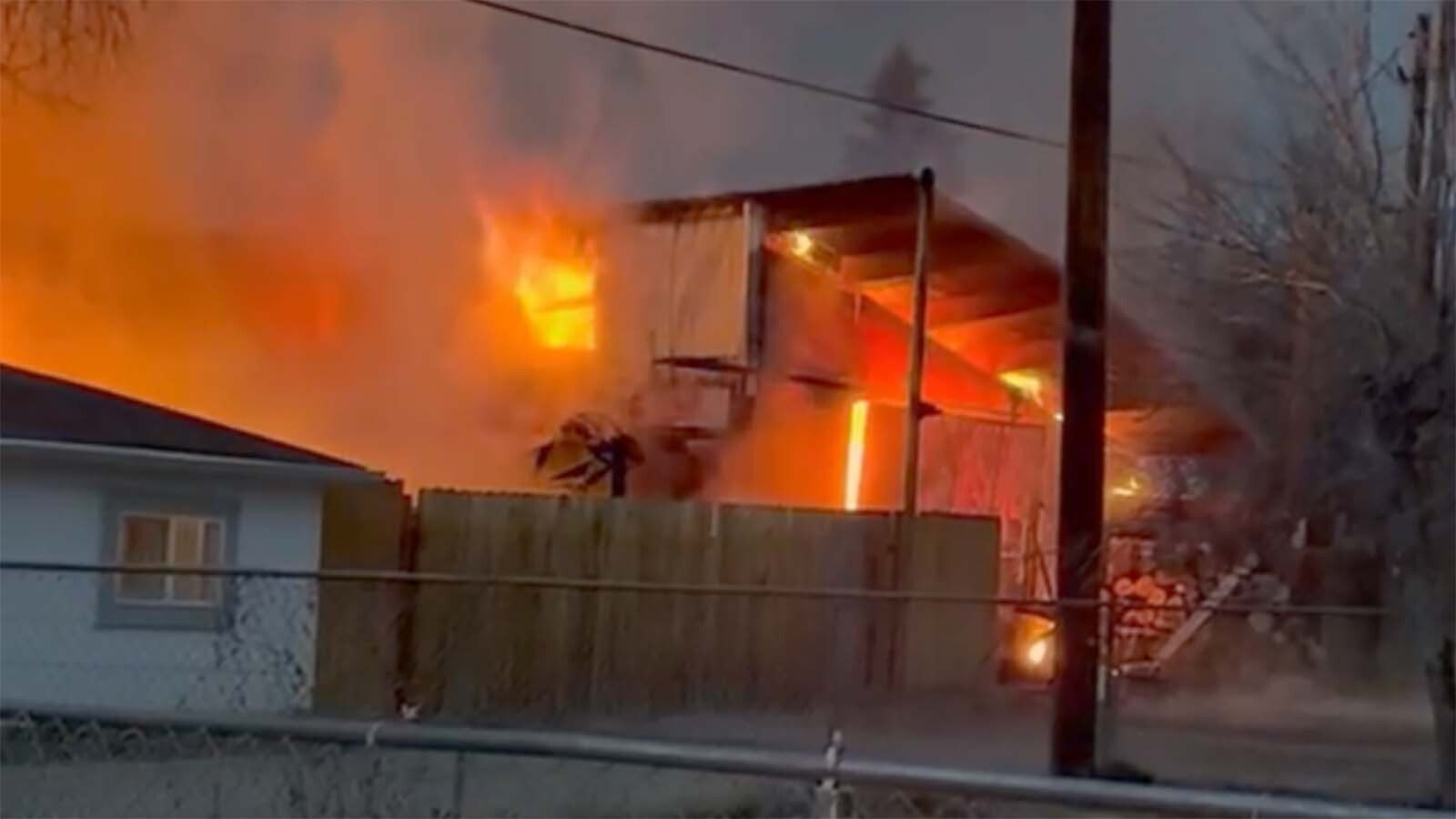It sounds like the greenest of green burial options: When you die, have a tree planted over your decomposing body so as it grows, some part of you lives on.
The process allows “the body’s nutrients to directly feed the tree and help it grow,” according to the website for WeTranscend, a relatively new company out of Brooklyn, New York, that proposes reforesting the planet with trees planted over the decomposing bodies of humans and pets.
And while becoming a tree when you die sounds like the ideal eco-friendly practice, it’s not something that can be done just anywhere.
Experts in the Wyoming funeral industry say there are barriers to turning decomposing bodies into forest food.
Several Issues
In northeast Wyoming, the Campbell County Cemetery District operates a number of cemeteries, including Gillette’s showpiece Mount Pisgah Cemetery.
Allowing people to plant trees over the corpses of loved ones presents a number of challenges, said the district’s superintendent, Darin Edmonds.
Mount Pisgah “has been here for 130 some years, and so there are certain things that we’re locked into,” Edmonds said.
He cited local funeral regulations and pre-planned plots, as well as landscaping and maintenance issues as hurdles to overcome before a tree could feed on someone’s.
WeTranscend
WeTranscend founder Matthew Kochmann told Cowboy State Daily that he heard about the concept several years ago proposed by a company in Italy.
He decided he wanted to be buried using this method, but learned the company hadn’t actually created a business model for tree-pod burials.
“This thing that I had mentally signed up for in my mind didn’t actually exist,” Kochmann said. “And so if I wanted to be a tree when I died, I needed to actually go and create it.”
Kochmann knew quite a bit about how to make a business grow – he was the seventh employee hired at Uber and has a background in real estate. He puzzled over how to monetize a particular piece of property when an idea came to him.
“I’m a twice-daily meditator,” said Kochmann. “And one day in my morning meditation, the idea came back into my mind, like, what if we just took the land and sold it to people with little plots so that they can plant themselves as trees, and we could reforest land and rewild land with death?’”
Tackling Tough Topics
Kochmann said to make his idea a reality, he had to educate himself. So he set off on a “wild journey” to learn about human decomposition science, the funeral industry and law, which he said is vastly different across the 50 states.
A hurdle, though, is that western culture has set a precedent for burials that date back to shortly after the Civil War, when lobbyists for the funeral industry insisted that dead bodies were a public health hazard. He said that’s why embalming and underground vaults are the norm for casket burials.
While that was the concern, he insists that “there’s nothing dangerous or toxic about a dead body.”
Because our modern society pushes the subject of death to the back of the bookshelf, people don’t have the conversations they should have with their loved ones about what their wishes are for after they die.
“The beautiful thing about tree burial is that it gives people an aspiration for topics that they want to think nothing about,” said Kochmann.
Becoming A Tree
Kochmann said the process is carefully planned out.
The body is wrapped in biodegradable, 100% organic flax linen, lowered onto a bed of locally sourced wood chips to allow for natural decomposition.
The company’s personal blend of mushrooms, soil and wood chips is spread above the body to nourish the tree of choice, which will be planted directly above the burial site.
“There’s a very specific way to do it so that you’re optimizing for the transference of your biology getting taken up into the roots of the tree,” said Kochmann. “There is a direct transference of (your body) into the tree – you’re literally becoming a tree.”
Additionally, if the family chooses, people can be “planted” near each other, allowing roots of the growing trees to intertwine.
“What we now know about how forests communicate is that the roots of the trees and the mycelium networks – the networks that interconnect all the trees in a forest – they exchange information,” said Kochmann. “So your tree and your family members’ trees will be constantly communicating underground for generations, taking care of one another in perpetuity.”

Planted In Wyoming?
Natural burial is legal in all 50 states, Kochmann explained, although some have their own definitions.
“Natural burial, or burial without embalming fluid and without ornate caskets and metals and lacquers and stuff like that, that is absolutely legal,” he said. “There’s just very complicated rules of who’s allowed to handle the body.”
Kochmann said that Wyoming has some of the more broadly written laws in the country when it comes to cemetery and funeral regulations, which might make it easier for Wyoming residents to choose tree pod burials.
But burial experts in the Cowboy State say local regulations and other obstacles may prevent planting people and trees in the same space here.
“We have 1,800 trees in our cemetery, and every family always wants to be close by a tree or wants a tree planted near their grave,” said Edmonds. “But our regulations for maintenance and consistency of operations, even if it’s just mowing the grass or being able to dig the grave next to it, that’s the reason we don’t allow trees inside of a cemetery plot.”
Edmonds said that most cemetery districts in the state have specific plot maps already set up, which would be a barrier to natural practices such as WeTranscend.
“A lot of cemeteries have been around for years and they’re already in their predetermined space,” he said.
And some cemeteries have specific regulations regarding burials, according to Cody Gortmaker, funeral director at Ballard Funeral Home in Cody and Park County coroner.
“Riverside cemetery in Cody requires a dome or a vault to go around the casket or the person,” he said.
Another concern is the mortality of the tree itself. Gortmaker said there’s the potential for additional trauma for families should something happen to their loved one’s trees.
“It’s a little risky to hedge your bets on one tree growing, because what happens if it’s a sapling and then a buck comes along and tramples you?” said Gortmaker. “And then the family’s like, ‘Oh, grandma’s tree is dead.’”
Reforesting the Earth with Death
Edmonds said the cemetery district has performed several “green” burials in which the deceased was just wrapped in a blanket and lowered into a traditional grave without a casket.
“At the state level, there are no requirements,” said Edmonds. “Those requirements are set cemetery by cemetery. Some cemeteries require a concrete vault if you’re in a casket, and they do that for maintenance or water table concerns and stuff like that.”
But he said there is room in the planning process for some of the more non-traditional burial methods that are becoming more popular.
“Our cemetery district is master planning our next cemetery,” he said. “And when we develop that property, we probably will incorporate some ground for these non-traditional kinds of things, whether it’s green burials or pets.
“Maybe in the next 100 years, cemeteries won’t look anything like they did in the last 100 years.”
Kochmann said that his dream for WeTranscend is the ultimate in recycling – planting trees that not only remind us of our loved ones, but actually absorb part of their biology so they are never really gone.
“There are opportunities to give your death purpose and have your death have a positive impact well beyond you leaving this world,” he said.
And in proposing such a radical shift in burial practices, Kochmann said he hopes people will overcome the stigma of discussing and planning for their own – inevitable – deaths.
“Our vision is getting people to make these decisions earlier and start cultivating a more inspired and healthy relationship with their own mortality,” Kochmann said, “because it helps bring them into more presence in this life – knowing that this is finite, and there’s nothing to be afraid of, but we can just relish the moment more.”





